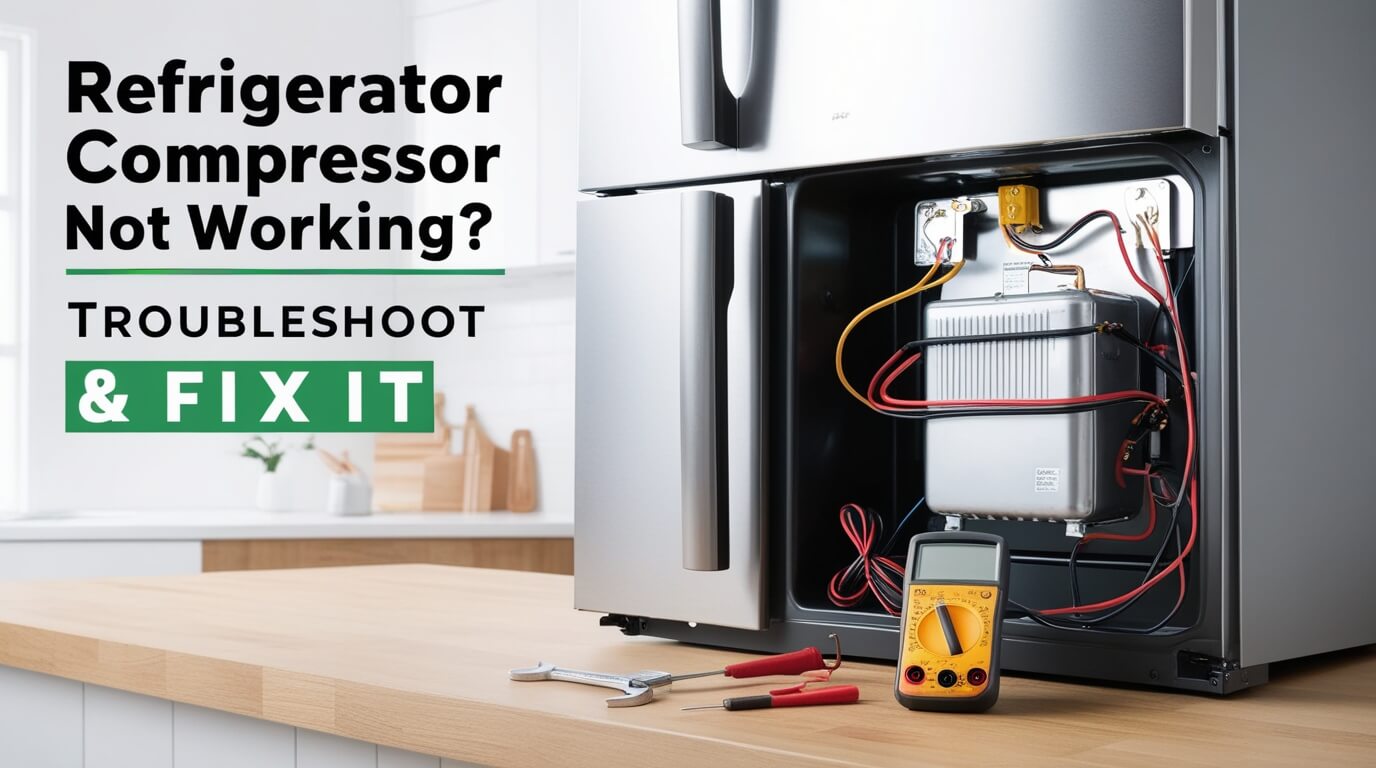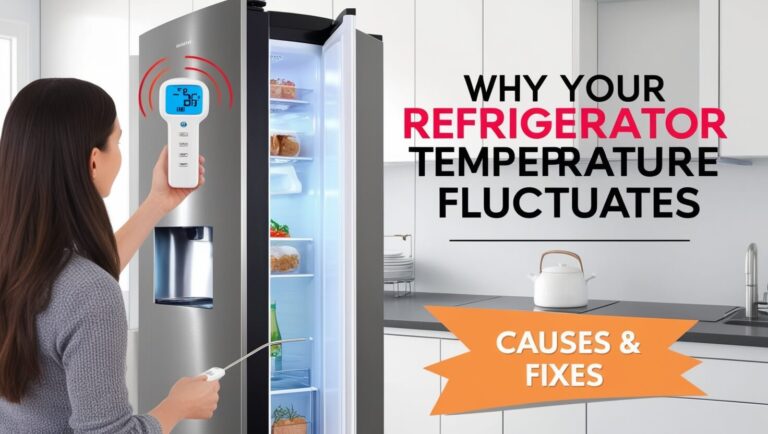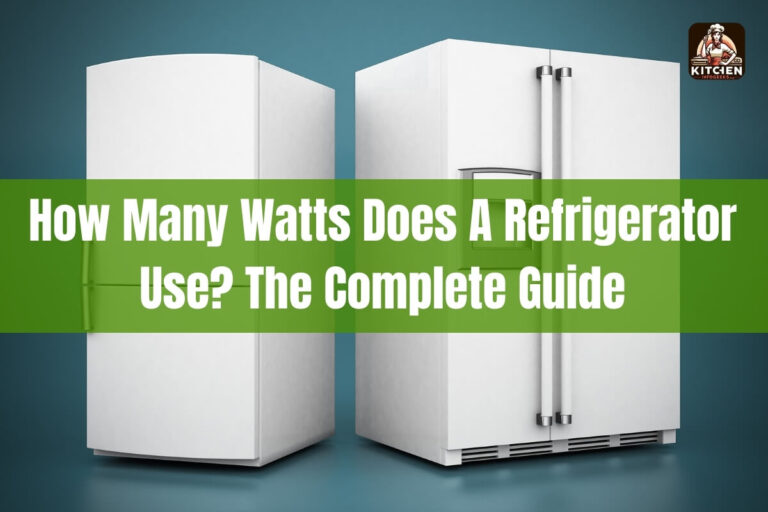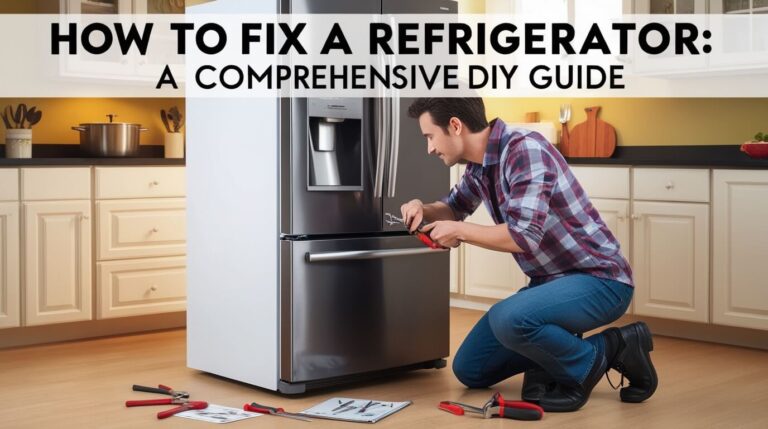
Is your refrigerator warm inside? The compressor might not be working. This guide will help you understand why refrigerator compressors fail, how to spot the signs, and what you can do about it. We’ll cover everything from simple fixes to when it’s time to call a pro.
Refrigerator’s Compressor
What Does a Refrigerator Compressor Do?
Think of your fridge’s compressor as its heart. It pumps refrigerant through the system, keeping your food cool. Without it, your fridge is just a fancy cabinet.
The compressor works by:
- Compressing refrigerant gas
- Pushing it through coils outside the fridge
- Allowing the gas to expand inside, which cools the interior
Signs of a Malfunctioning Compressor
How do you know if your compressor’s on the fritz? Look out for these red flags:
- Fridge isn’t cold enough
- Food spoiling faster than usual
- Strange noises (humming, clicking, or buzzing)
- Compressor feels hot to touch
- Fridge running constantly
If you notice any of these, your compressor might be struggling.
Common Reasons Why Your Refrigerator Compressor Isn’t Working
Electrical Issues
Sometimes, the problem isn’t the compressor itself, but the power supply. Check these first:
- Loose or damaged power cord
- Tripped circuit breaker
- Faulty outlet
A quick tip: Try plugging another appliance into the same outlet. If it works, your outlet’s fine.
Faulty Start Relay or Capacitor
The start relay and capacitor are like the compressor’s ignition system. If they’re faulty, your compressor won’t start. Signs include:
- Clicking sound when the fridge tries to start
- Compressor is hot but not running
Overheating Problems
Compressors can overheat for several reasons:
- Dirty condenser coils
- Poor ventilation
- Refrigerant leak
Regular cleaning can prevent many overheating issues.
Compressor Motor Failure
Sometimes, the compressor motor just wears out. This is often due to:
- Age
- Frequent use
- Power surges
A failed motor usually means replacing the whole compressor.
DIY Troubleshooting Steps for a Non-Working Refrigerator Compressor
Safety Precautions Before You Begin
Before you start poking around, remember:
- Unplug the fridge
- Wear gloves
- Don’t touch bare wires
Safety first, always!
Checking Power Supply and Electrical Connections
Start with the basics:
- Ensure the fridge is plugged in securely
- Check the circuit breaker
- Inspect the power cord for damage
Sometimes, the fix is as simple as pushing the plug in all the way.
Inspecting and Cleaning Condenser Coils
Dirty coils make your compressor work overtime. Here’s how to clean them:
- Locate the coils (usually behind or under the fridge)
- Vacuum away dust and debris
- Use a coil brush for stubborn dirt
Clean coils can breathe new life into your compressor.
Testing the Start Relay and Capacitor
This test requires a multimeter. If you’re not comfortable with electrical work, skip to the next section.
To test the start relay:
- Unplug the fridge
- Remove the start relay
- Shake it gently – if you hear rattling, it’s likely faulty
- Use a multimeter to check for continuity
For the capacitor:
- Discharge it safely
- Use a multimeter to test its capacitance
If either component fails these tests, replace it.
Examining the Compressor Overload Protector
The overload protector shuts off the compressor if it gets too hot. To check it:
- Locate the overload protector (usually on the side of the compressor)
- Use a multimeter to test for continuity
- If there’s no continuity, replace the protector
Remember, if you’re unsure about any of these steps, it’s best to call a pro.
When to Call a Professional for Your Refrigerator Compressor Issues
Signs That Indicate Professional Help Is Needed
Some problems are best left to the experts. Call a pro if:
- You’ve tried the DIY steps and nothing’s worked
- There’s a refrigerant leak
- You hear loud or unusual noises
- The compressor is visibly damaged
- Your fridge is over 10 years old
Don’t risk making the problem worse by trying complex repairs yourself.
What to Expect During a Professional Diagnosis
When the technician arrives, they’ll likely:
- Ask about the symptoms you’ve noticed
- Inspect the compressor and related components
- Run diagnostic tests
- Explain the problem and recommend solutions
Be prepared to answer questions about when you first noticed the issue.
Repairing vs. Replacing a Faulty Refrigerator Compressor
Costs Associated with Compressor Repair
Repairing a compressor can be pricey. Expect to pay:
- $200-$450 for minor repairs
- $500-$800 for major repairs
Labor costs can add another $100-$200 to the bill.
When It’s Time to Consider a New Refrigerator
Sometimes, replacement is smarter than repair. Consider a new fridge if:
- Repairs cost more than half the price of a new fridge
- Your current fridge is over 10 years old
- You’re facing frequent repairs
A new, energy-efficient model could save you money in the long run.
Preventing Future Refrigerator Compressor Problems
Regular Maintenance Tips
Keep your compressor happy with these tips:
- Clean condenser coils twice a year
- Check door seals for leaks
- Keep the fridge level
- Avoid overloading the fridge
Regular maintenance can extend your compressor’s life by years.
Optimal Refrigerator Settings and Usage
Use your fridge wisely:
- Set the temperature between 37°F and 40°F
- Don’t put hot food directly in the fridge
- Leave space around the fridge for air circulation
- Minimize door openings
These habits reduce strain on your compressor.
Conclusion: Keeping Your Refrigerator Compressor Running Smoothly
A working compressor is crucial for a functional fridge. By understanding the signs of trouble and following proper maintenance, you can avoid many common issues. Remember, when in doubt, it’s always best to consult a professional. With the right care, your refrigerator compressor can keep your food fresh for years to come.






